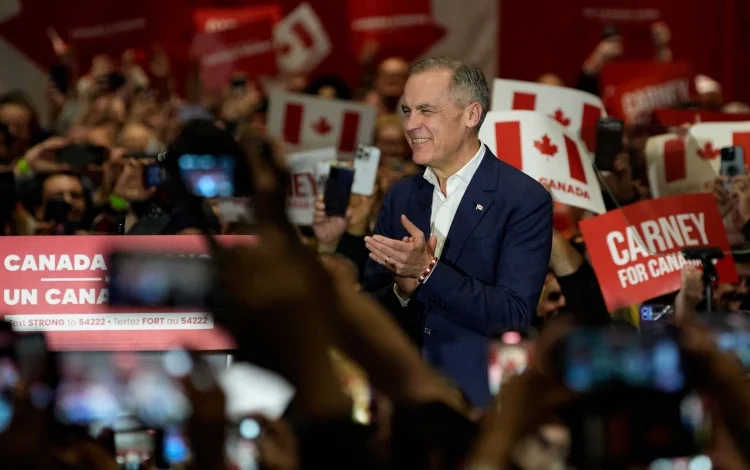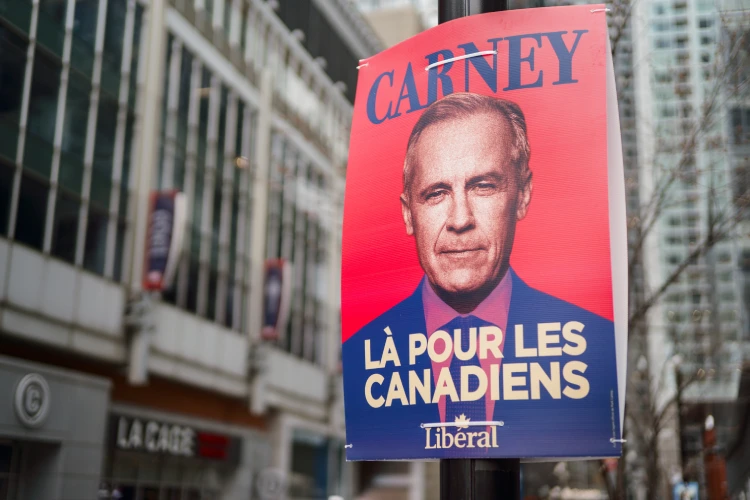
Mark Carney Wins Fourth Term for Liberals as Canada Pushes Back on Trump
Trump’s Trade Threats and Interference Shift Election in Carney’s Favor
Mark Carney’s Liberal Party will form a minority government after federal election in Canada, securing a fourth term in office and completing a rapid political turnaround. The former central banker and political newcomer took the top job just nine days before calling the election, a gamble that paid off.
While the Liberals fell short of a majority, the win represents a shift in voter sentiment that caught many off guard. A major factor was the role played by U.S. President Donald Trump’s escalating rhetoric and pressure on Canada.
U.S. Pressure Turned the Tide

Throughout the campaign, Trump issued a series of statements targeting Canada’s economy and sovereignty. He called for the country to become the 51st U.S. state and falsely claimed the U.S. subsidizes its northern neighbor. He also announced a 25 percent tariff on Canadian exports, escalating economic tensions.
Those remarks sparked backlash among Canadian voters. According to Elections Canada, a record 7.3 million ballots were cast before election day, many believed to be a response to Trump’s rhetoric. That surge helped the Liberals, who had been trailing for much of the year.
In his victory speech, Carney said, “They wanted to break us so they could own us. That will never happen.”
Conservative Leader Loses Seat Despite Party Gains
Conservative leader Pierre Poilievre, who had held his Ottawa-area seat since 2004, lost to a Liberal challenger. Although his party gained ground nationally, his personal defeat is expected to cause friction within the party. Poilievre’s campaign often echoed Trump’s style, which may have backfired after the U.S. president became a central election issue.
Poilievre told supporters, “We’ll keep holding the government accountable. But we will always put Canada first.”
The Conservative Party had been calling for a snap election for several months, confident that public frustration would work in their favor. But Trump’s intervention—and Carney’s last-minute rise—shifted momentum just weeks before the vote.
NDP Suffers Historic Collapse
The New Democratic Party (NDP) had its worst performance in decades. The party failed to win enough seats to retain official status in Parliament, marking only the second time this has happened in its history.
The collapse of the NDP and Bloc Québécois concentrated votes between the Liberals and Conservatives, with both major parties taking over 80 percent of the total vote share—something not seen in nearly 70 years.
Minority Government, But a Strong Message
Despite not winning a majority, Carney’s Liberals are expected to govern with support from smaller parties, likely through informal agreements. This was the model followed in the previous term under Justin Trudeau, Carney’s predecessor.
The win reflects both a rejection of Trump’s involvement and a renewed interest in economic stability. Carney, an economist with international credentials, focused his campaign on protecting Canada’s economy and sovereignty in the face of growing U.S. pressure.
Carney remarked that while Canadians had processed the blow from the U.S., the experience would not be forgotten.
Next Steps
Carney inherits a challenging political landscape. Canada is still dealing with a cost-of-living crisis, a strained housing market, and now, the threat of new tariffs from its largest trading partner. Over 75 percent of Canadian exports go to the U.S., leaving the economy sensitive to cross-border policy shifts.
The new government is expected to explore trade diversification while reinforcing partnerships outside North America. That shift may define Carney’s leadership going forward.




